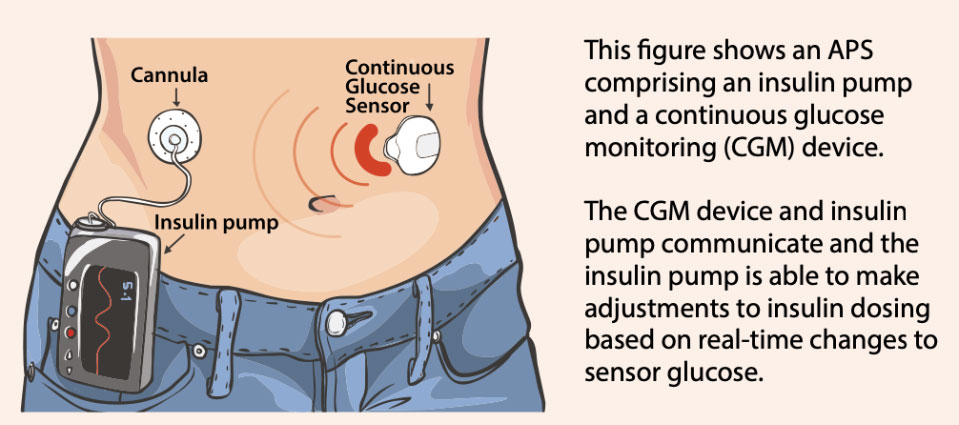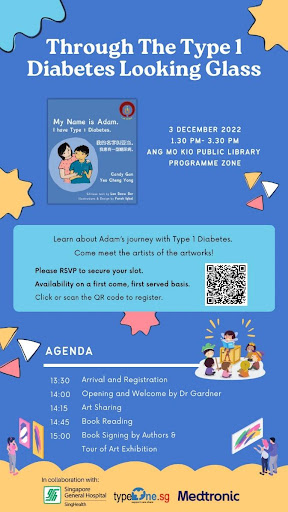Search
Search
News
Lifestyle
Lifestyle News
Hot Deals
Trending
Drama
Things To Eat
Things To Do
Stories Of Us
Celebrity
Heartwarming
Travel
Videos
Abroad
Weekend
Environment
Careers
+ More
Parliament
Perspectives
History
Covid-19Search
News
Covid-19
Lifestyle
Lifestyle News
Hot Deals
Trending
Drama
Things To Eat
Things To Do
Stories Of Us
Celebrity
Heartwarming
Travel
Videos
Abroad
Weekend
Environment
+ More
Parliament
Perspectives
History
Covid-19Search
← Back
5% of all people living with diabetes have type 1 diabetes, despite seemingly doing everything right – exercising regularly and staying away from unhealthy food.
| | | ![]() November 29, 2022, 12:00 PM
November 29, 2022, 12:00 PM
![]() –
–
![]()
The usual advice administered to anyone who wants to stay in the pink of health has always been to eat healthy, exercise regularly, and live life in moderation.
If you take care of your health, your health will take care of the rest, as the usual saying goes.
If that’s the case, why do some people who follow this advice to a T still fall ill?
It is not difficult to find an example of such a phenomenon among friends and family, especially those who have come down with diabetes.
Diabetes may afflict those who don’t appear to be at risk of it
In Singapore, some 95 per cent of people who are living with diabetes have type 2 diabetes.
The risk factors for type 2 diabetes include being overweight or obese, and having a sedentary lifestyle, among others.
However, the other 5 per cent with diabetes have type 1 diabetes, which affects both the young and the old, regardless of lifestyle choices.
To understand more about type 1 diabetes, which can happen to anyone, we asked Dr Daphne Gardner, a doctor in Singapore, some of the most commonly asked questions about the condition.
 Gardner Tan Su-Lyn
Gardner Tan Su-Lyn As a senior consultant in the department of endocrinology at the Singapore General Hospital and also the director of education at SingHealth Duke-NUS Diabetes Centre, she has worked with many people with diabetes over the years to assist them with the condition and help them understand better what they are dealing with and how to self-manage well.
One area involves informing them about the role of insulin, a hormone produced by the pancreas that acts like a “key” to allow glucose into the cells.
Immune system destroys insulin-producing pancreas cells
According to Gardner, type 1 and type 2 diabetes are the two most common subtypes of diabetes.
The more common subtype is type 2, where in most cases, even with insulin present, glucose cannot enter the cells as there is resistance to insulin, she said.
Type 1 diabetes, on the other hand, occurs when the insulin-producing pancreas cells are destroyed.
“This is usually a result of an autoimmune process,” Gardner explained, pointing out the main difference between type 1 and 2 diabetes.
She added: “Both these conditions are characterised by raised glucose levels but the reason for this differs between the two.”
Children can develop type 1 diabetes
Although type 1 diabetes is more commonly diagnosed in children and those in young adulthood, it can develop at any age, Gardner added.
Regarding why type 1 diabetes may develop, she said: “Autoimmunity is thought to be the cause in close to 40 per cent of type 1 cases in Asian populations.”
“However, this means that the reason behind the loss of insulin-producing cells remains unclear in the majority of cases in Asians.”
This makes identifying those at risk of developing type 1 diabetes, including children, challenging.
Gardner said: “There is currently no effective way to predict who may develop, nor prevent the onset of type 1 diabetes. It does not occur in relation to weight status, lifestyle choices or eating certain types of food.”
What makes differentiating the two subtypes of diabetes difficult is that people with both type 1 and type 2 diabetes experience the same symptoms due to high blood glucose levels, including excessive thirst and urination, fatigue, weight loss, blurred vision, and frequent infections.
Gardner explained: “The main difference in presentation is that the onset of these symptoms can be very swift in type 1 diabetes since the loss of insulin-producing cells often occurs over a short period of time, resulting in the deterioration of health, and therefore, presentation with acute illness over days to weeks.
Living with type 1 diabetes
While being accurately diagnosed with type 1 diabetes is one thing, having to live with it often requires multiple changes.
Firstly, lifelong insulin replacement is required.
But having insulin is not like taking a pill in the morning and not thinking about it for the rest of the day.
Insulin only comes in the form of injections for administration.
Administer insulin up to five times a day
Essentially, there are two forms of insulin needed.
Gardner said: “In an intact pancreas, background insulin is produced even when one is not eating, as this stops fat breakdown. Similarly, in replacing insulin in type 1 diabetes, a long-acting background insulin is required even when not eating.”
“In addition, quick-acting insulin is needed to bring glucose levels down when having meals or snacks.”
To guide correct insulin dosing, glucose levels need to be checked before each meal-time.
Because carbohydrates are the main macronutrient that results in high glucose levels, people with type 1 diabetes also need to count their carbohydrates since different amount of carbohydrates require different amounts of insulin.
According to Gardner, this means most people living with type 1 diabetes have to administer four to five insulin injections daily, and have to test their blood glucose levels, typically through fingerprick tests, at least four times daily for optimal management.
“There is no rest from having to retrieve glucose data, calculate the correct insulin dose, and administer the insulin injections,” Gardner said.
Help for type 1 diabetes patients
To help type 1 diabetes patients in Singapore, Singapore General Hospital has been delivering the Singapore Dose Adjustment for Normal Eating (SgDAFNE) programme since 2011, Gardner said.
This is a five-day group education curriculum for individuals with type 1 diabetes.
It particularly focuses on advanced carbohydrate counting and self-management skills, such as administering appropriate doses of insulin for stable and improved glucose control.
Insulin pumps in lieu of multiple daily injections
With advancements in insulin delivering technology, people living with type 1 diabetes can experience benefits with the use of insulin pumps, which can lead to 90 per cent fewer injections.
Gardner explained that this is because an insulin pump replaces the need for multiple injections by delivering rapid acting insulin continuously 24 hours a day.
An insulin pump, she said, is a small electronic device, about the size of a smartphone, that can be easily carried on a belt, inside a pocket, or attached to a bra and so virtually invisible to others.
The device is attached to the body via a thin tube called an infusion set, through which insulin is delivered.
“This makes insulin pump therapy very discreet”, Gardner said.
Moreover, the insulin pump may also be linked with a continuous glucose monitor (CGM) sensor that allows the end-user to monitor their glucose levels in real time, usually via an app on their mobile phone.
 via SGH
via SGH With technology getting better, advanced insulin pump systems are equipped with an algorithm that uses the linked sensor’s glucose readings to automatically adjust insulin delivery.
It is also able to correct for high glucose levels up to every five minutes, providing stability in glucose levels with less end-user burden.
Some people may not be aware that there is such technology available that can help them manage their diabetes better and reduce their self-care burden.
Those who are interested in this solution should approach their healthcare provider for more information, Gardner added.
She said: “At Singapore General Hospital, we have been delivering a multi-disciplinary intensive insulin programme that incorporates diabetes technology like pumps and continuous glucose monitoring since 2014.”
The exhibition will be held from Dec. 3. to 29, 2022 at the Ang Mo Kio Public Library.
Register and join the launch of Ang Mo Kio Library’s Dec 2022 Art Exhibition, “Through The T1D Looking Glass” here.
The art exhibition is jointly organised by Medtronic, Singapore General Hospital and typeOne.sg.

All information provided herein are for information and education purposes only. The views expressed herein are independent views of Dr Daphne Gardner. Please speak with your physician for any health-related query.
This is a sponsored article by Medtronic.
Top left photo via Medtronic
If you like what you read, follow us on Facebook, Instagram, Twitter and Telegram to get the latest updates.
Some of those who have tried the drinks have said they are not minty enough.
He posed as different people to manipulate his victims.
Time to go coffeeshop watch football
This brings the total tally of workplace fatalities in 2022 to 42.
MPs said that residents expressed their concerns over 'activism'.
He's done.
Many in the crypto community shocked.
Vivian said mutual respect and compassion would allow Singapore to find a safe landing zone to protect families and gay Singaporeans.
Any reference to the protests has also been scrubbed clean from the Chinese intranet.
Oh no

About | Advertise with us | Contact us | We Are Hiring | Privacy policy
Copyright © 2020 Mothership. All rights reserved.